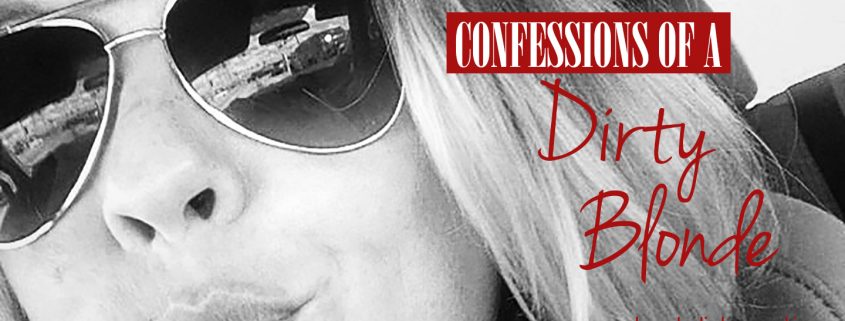Backstory – how much is too much? Confessions of a Dirty Blonde
This week’s question comes from a client. And it’s a damn good one.
Sequels: do you assume the reader has read the first book and launch right in? Or provide extensive recap for those new to the party? Or strike a happy medium?
My main man Mark Twain started what I believe to be the best American novel with, “You don’t know about me without you have read a book by the name of The Adventures of Tom Sawyer; but that ain’t no matter.”
We could argue whether Huck Finn is actually a sequel to Tom Sawyer, but let’s acknowledge these central characters only exist in these two novels. Plus, Twain’s the shit.
His point? People were picking up this novel without reading the prequel. Acknowledging this possibility was all the time he spent rehashing Tom Sawyer’s story, yet Tom contributed quite a bit to Huck Finn.
Did it matter Huck was introduced in The Adventures of Tom Sawyer? Not really. The characters were reintroduced throughout the novel, personality traits and habits written in where necessary. And Twain didn’t rehash the plot because it was insignificant to the movement of the second story. So done and done.
But some stories do need the background. For example, The Hunger Games sequel Catching Fire wouldn’t make sense without the referencing the plot of the first book. Rehashing the previous plot too much will lead to boredom for returning readers. But avoiding an explanation may lead to confusion for new readers. Tough call.
Or is it?
Maybe the difference is in your storyline.
A good question to ask yourself:
Does the sequel build off of the plot of the previous book?
If not, you’re in luck. You can choose to play with redeveloping your characters in the second story, maybe even reinventing them.
In Huck Finn the answer is no, it doesn’t. So Twain didn’t include the recap, except for his tiny shout out.
If your story does build off of the previous plot, you probably need to consider how much retelling needs to happen. Yes, YOU love your characters so much you want to give away all the details. But is it necessary? In most cases, a chapter is enough to bring characters back to life. And, as always, showing is far more important than telling.
In Catching Fire, Suzanne Collins spends the first chapter reminding her audience of previous events and her heroine’s feelings without saying, “Katniss remembered the arena and the terrors of winning the Hunger Games.” She puts her instead on the verge of a victory tour, moving forward with the action and reminding us the protagonist is unhappy about something.
I clasp the flask between my hands even though the warmth from the tea has long since leached into the frozen air. My muscles are clenched tight against the cold. If a pack of wild dogs were to appear at this moment, the odds of scaling a tree before they attacked are not in my favor. I should get up, move around, and work the stiffness from my limbs. But instead I sit, as motionless as the rock beneath me, while the dawn begins to lighten the woods. I can’t fight the sun. I can only watch helplessly as it drags me into a day that I’ve been dreading for months.
The first paragraph could work for both audiences because she puts you in the middle of the action. Sure, the rest of the chapter describes important characters and events, but only raving fans would say you must read the first book to understand. Regardless, those fans are going to continue reading whether or not they appreciate the homage to the first book.
What’s important to note, however, is the similarity between these books. (Yes, between a classic American author and a contemporary young adult author). The writers chose to forgo a lot of review and simply thrust the reader into the middle of the action. While it’s true some recap is included, it’s thrown in throughout the books.
Harry Potter books are the same (although a chapter recap is usually included). So are memoirs like A Child Called It and its sequel, The Lost Boy.
So if we’re analyzing famous sequels, I think the pattern is for less.
Give me action. Give me the bare bones of what I need to know if I’m picking up your sophomore book as my first. But you don’t need to waste a lot of space on detailed background. It’s unnecessary and it leaves more room for fresh, engaging content.
***
Got writing questions for Capo? Email capo@rebeccatdickson.com. Confessions of a Dirty Blonde goes out every Thursday.






In one of the few instances I assume, when it comes to sequels, I do just that. Like anything else, I’m a believer (kind of anally so) that one should begin at the beginning. And when I write, I write the stories I want to read. Seeing I read in order, I write as if my readers do the same.
I think it’s a safe bet, Will. You will, on occasion, run into the reader who picks up your second book without realizing it’s a sequel. Jumping straight in can make it fairly obvious to them AND be engaging enough they’ll want to find the first book. I see it as a win/win.
I really enjoy Jim Butcher’s Dresden series, but I will admit he did entirely too much re-hashing at the beginning of the first four (more?) books. Right in the very beginning. It drove me nuts but I loved the story enough, and things changed, evolved so much, I understood. But I was so relieved when he lightened up on the review, spread it through the novels, and generally trusted the reader.
I’m with Will, though. I think you should begin at the beginning. If you don’t, that’s your choice but don’t expect everyone to stop the action and catch you up!
Cheers!
<3
Thursdays haven’t been this HOTT since Seinfeld. xxoo
That, sir, is the best fucking compliment you could give. Xoxo.